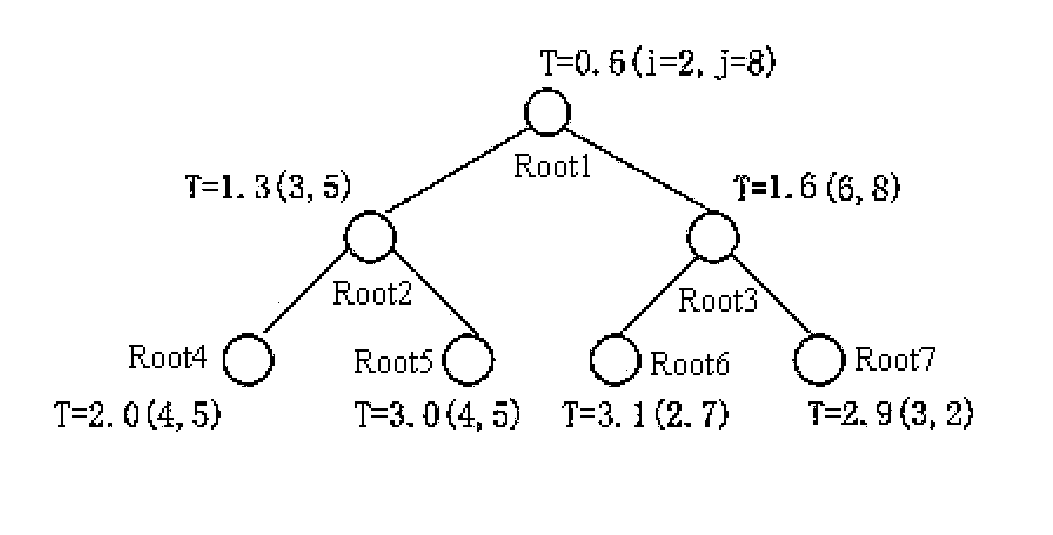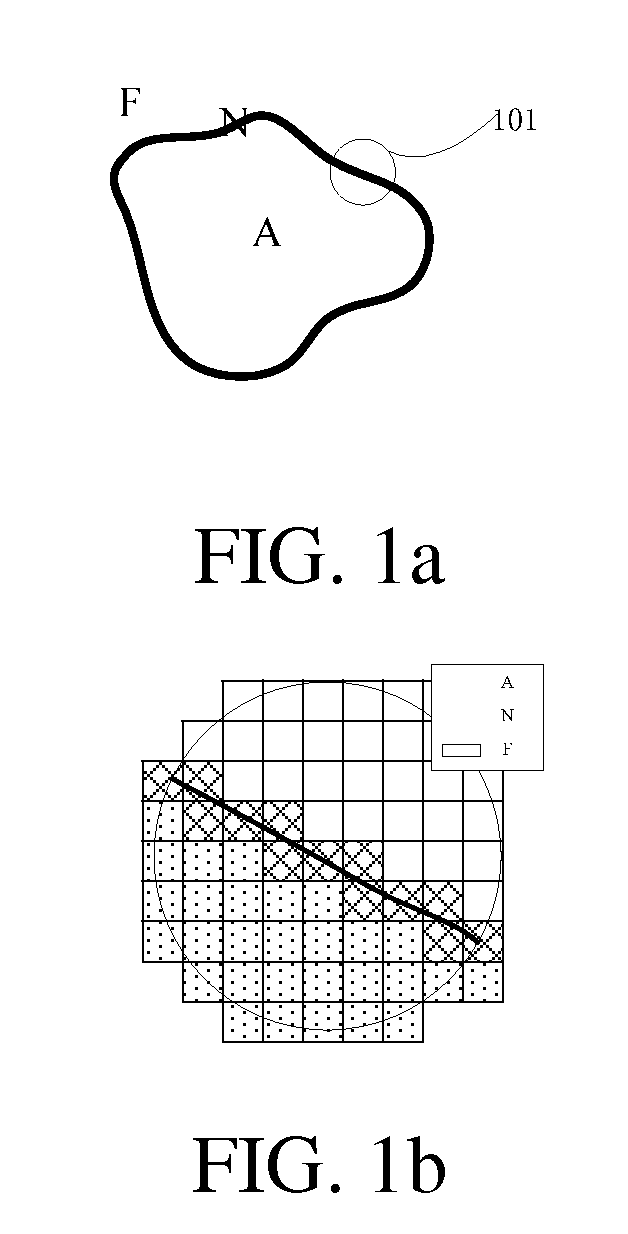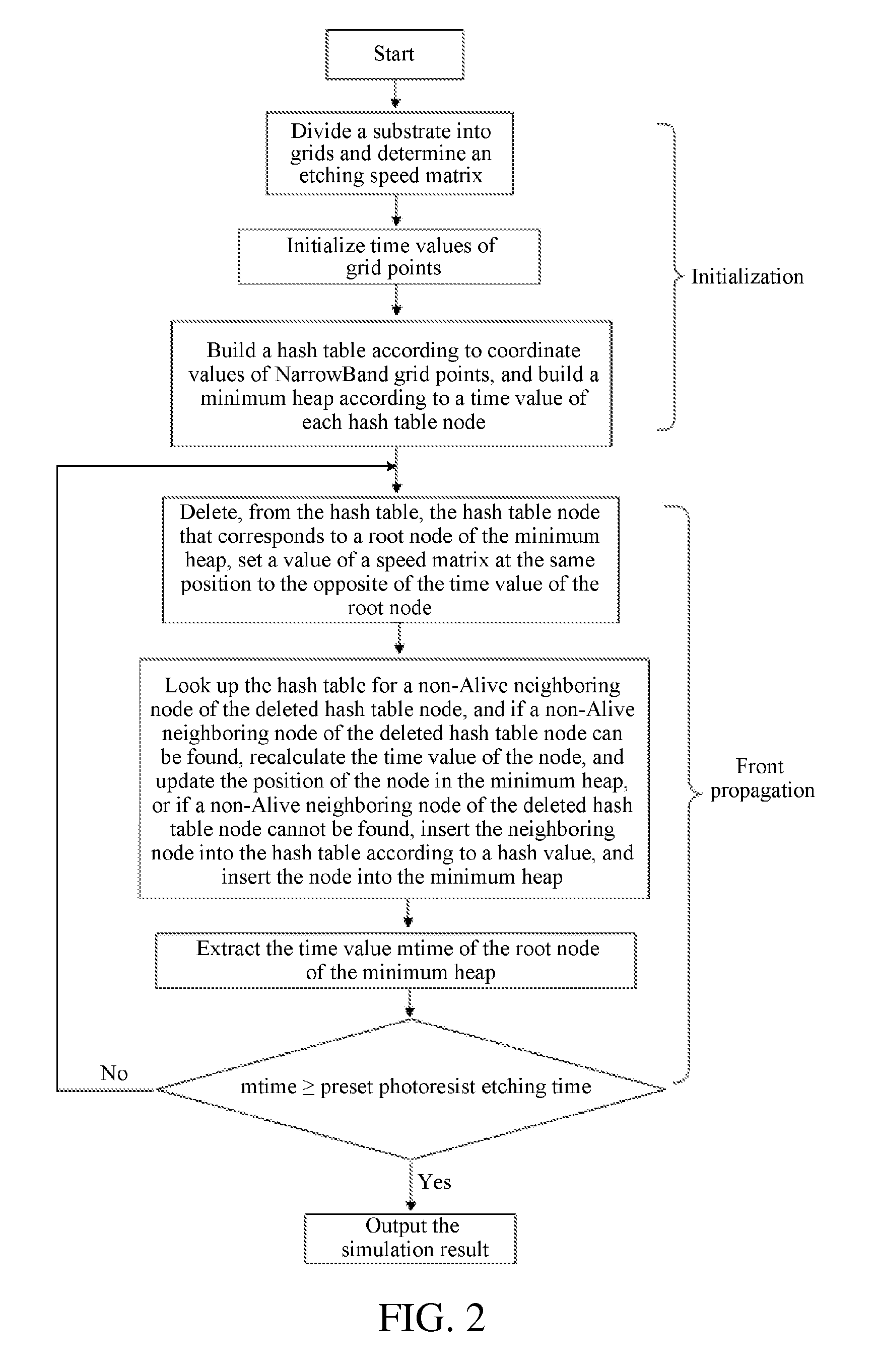Hash Fast Marching Method for Simulation of Surface Evolution in Photoresist Etching Process
a photoresist etching and surface evolution technology, applied in the direction of computation using non-denominational number representation, design optimisation/simulation, instruments, etc., can solve the problems of high memory space requirements, high investment costs, and inability to accurately understand the manufacturing process principle, etc., to achieve low memory space requirements, high speed and good stability
- Summary
- Abstract
- Description
- Claims
- Application Information
AI Technical Summary
Benefits of technology
Problems solved by technology
Method used
Image
Examples
Embodiment Construction
[0025]The present invention is further described in detail with reference to the accompanying drawings and specific embodiments. It will be appreciated that these embodiments are merely used for describing the present invention rather than limiting the scope of the present invention. Any equivalent modification made by those skilled in the art after reading the present invention shall fall within the scope defined by the claims of the present application.
[0026]FIG. 1a is a schematic view of a narrow band in a fast marching method. FIG. 1a illustrates a known two-dimensional closed curve, where a black narrow band is the contour of the curve. FIG. 1b is an enlarged view of part 101 in FIG. 1a, where grid lattices with dotted patterns are grid points that have been crossed (represented by A), that is, grid points inside the curve, white grid lattices are grid points that have not been reached, that is, grid points outside the curve (represented by F), and grid lattices with meshed pat...
PUM
| Property | Measurement | Unit |
|---|---|---|
| speeds | aaaaa | aaaaa |
| time | aaaaa | aaaaa |
| size | aaaaa | aaaaa |
Abstract
Description
Claims
Application Information
 Login to View More
Login to View More - R&D
- Intellectual Property
- Life Sciences
- Materials
- Tech Scout
- Unparalleled Data Quality
- Higher Quality Content
- 60% Fewer Hallucinations
Browse by: Latest US Patents, China's latest patents, Technical Efficacy Thesaurus, Application Domain, Technology Topic, Popular Technical Reports.
© 2025 PatSnap. All rights reserved.Legal|Privacy policy|Modern Slavery Act Transparency Statement|Sitemap|About US| Contact US: help@patsnap.com



